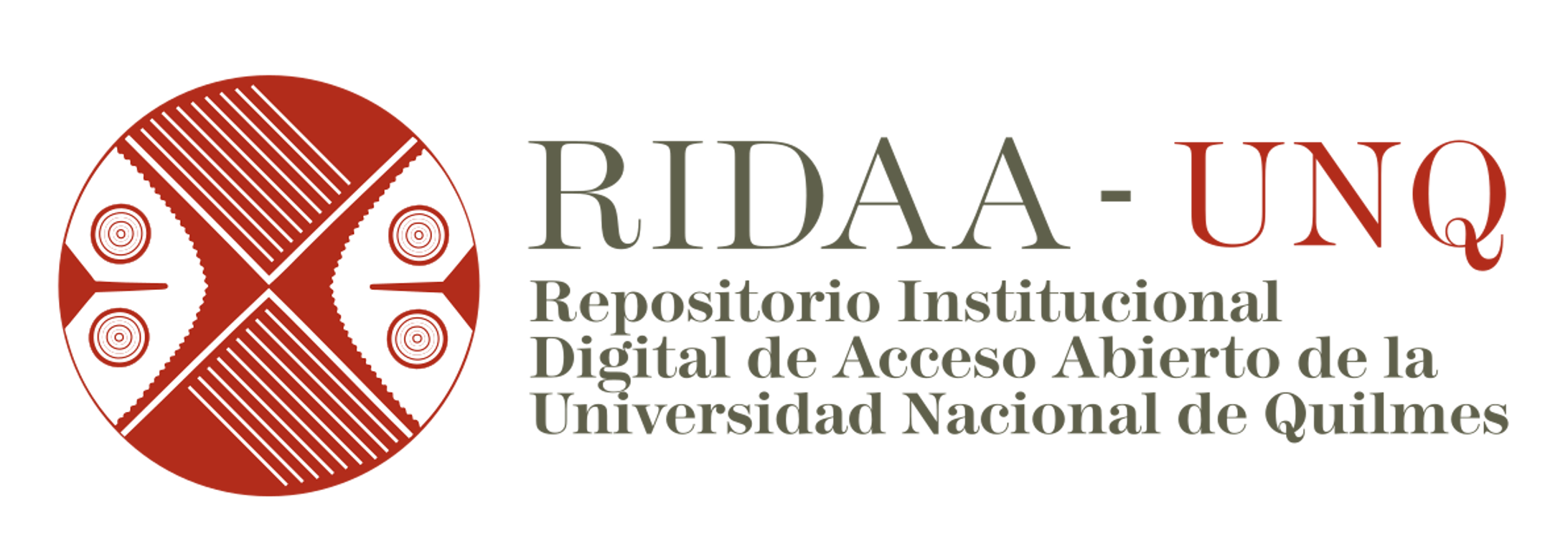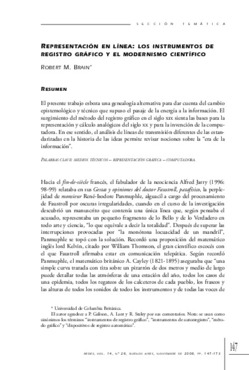Mostrar el registro sencillo del ítem
Representación en línea : los instrumentos de registro gráfico y el modernismo científico
Representation on the line : graphic recording instruments and scientific modernism
| dc.creator | Brain, Robert M. | |
| dc.date.accessioned | 2017-07-13T21:22:37Z | |
| dc.date.available | 2017-07-13T21:22:37Z | |
| dc.date.issued | 2008-11 | |
| dc.identifier.citation | Brain, R. M. (2008). Representación en línea: los instrumentos de registro gráfico y el modernismo científico. Redes, 14(28), 147-173. | es |
| dc.identifier.issn | 0328-3186 (impresa) | es |
| dc.identifier.issn | 1851-7072 (en línea) | es |
| dc.identifier.uri | http://ridaa.unq.edu.ar/handle/20.500.11807/463 | |
| dc.description | Fil: Brain, Robert M. Universidad de Columbia Británica; Canadá. | |
| dc.description.abstract | El presente trabajo esboza una genealogía alternativa para dar cuenta del cambio epistemológico y técnico que supuso el pasaje de la energía a la información. El surgimiento del método del registro gráfico en el siglo XIX sienta las bases para la representación y cálculo analógicos del siglo XX y para la invención de la computadora. En ese sentido, el análisis de líneas de transmisión diferentes de las estandarizadas en la historia de las ideas permite revisar nociones sobre la “era de la información”. | es |
| dc.description.abstract | This paper analyzes certain scientific imaginary, in which leading scientists promoted the graphic method of representing automatically recorded curves as “the language of the phenomena themselves,” or the “universal language of science”. Graphic recording devices appeared not merely as an effective laboratory method, they became the primary technique of universal communication. This essay delineates the movement from energy to information through the optic of the graphic method. It aims to contribute to the expanding revisionism of the computer and the “information age”, not in the form of a strictly linear or encompassing history, but by proposing elements of an alternative genealogy, sometimes drawn from unfamiliar sources, tracing lines of descent different from the standard accounts of either intellectual history or the history of engineering or business organization. The present account points to a different set of instruments and a different intellectual tradition, specifically that which came to be known in the 20th century as analog representation and calculation. This genealogy has been made necessary by the reigning moral history which underpins our assumptions about the emergence of the information age. This essay aims to sketch some of the lineaments of an alternative view, and to call attention to the work of those who have begun to make it conceivable. | es |
| dc.format | application/pdf | es |
| dc.language | spa | es |
| dc.publisher | Universidad Nacional de Quilmes | es |
| dc.rights | https://creativecommons.org/licenses/by-nc-nd/2.5/ar/ | es |
| dc.source | Redes | es |
| dc.subject | Métodos gráficos | es |
| dc.subject | Computadora | es |
| dc.subject | Proceso de datos | es |
| dc.subject | Graphic methods | es |
| dc.subject | Computer | es |
| dc.subject | Data processing | es |
| dc.subject | Computadores | es |
| dc.subject | Processamento de dados | es |
| dc.title | Representación en línea : los instrumentos de registro gráfico y el modernismo científico | es |
| dc.title | Representation on the line : graphic recording instruments and scientific modernism | es |
| dc.type | info:ar-repo/semantics/artículo | es |
| unq.blm.ubicacion | P-AR-RED1 | es |
| unq.articulos.paginicio | 147 | es |
| unq.articulos.pagfinal | 173 | es |
| unq.revista.numero | 28 | es |
| unq.revista.volumen | 14 | es |
| unq.version | info:eu-repo/semantics/publishedVersion | es |
| unq.articulos.seccion | Sección temática | es |
| unq.tipo.snrd | info:eu-repo/semantics/article | es |
| unq.acceso | info:eu-repo/semantics/openAccess | es |
Ficheros en el ítem
Este ítem aparece en la(s) siguiente(s) colección(ones)
-
Vol. 14, no. 28
Publicada en noviembre de 2008.

